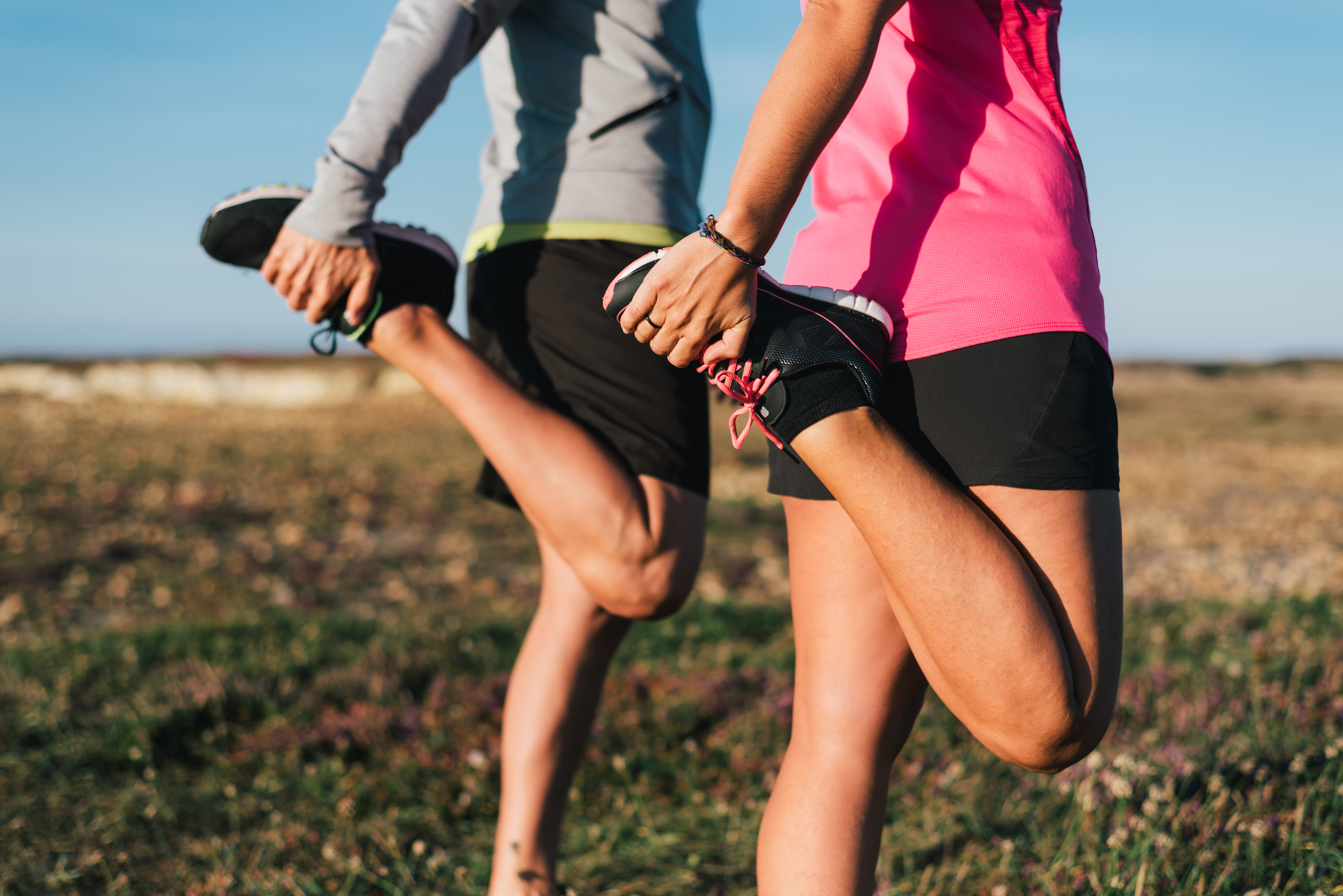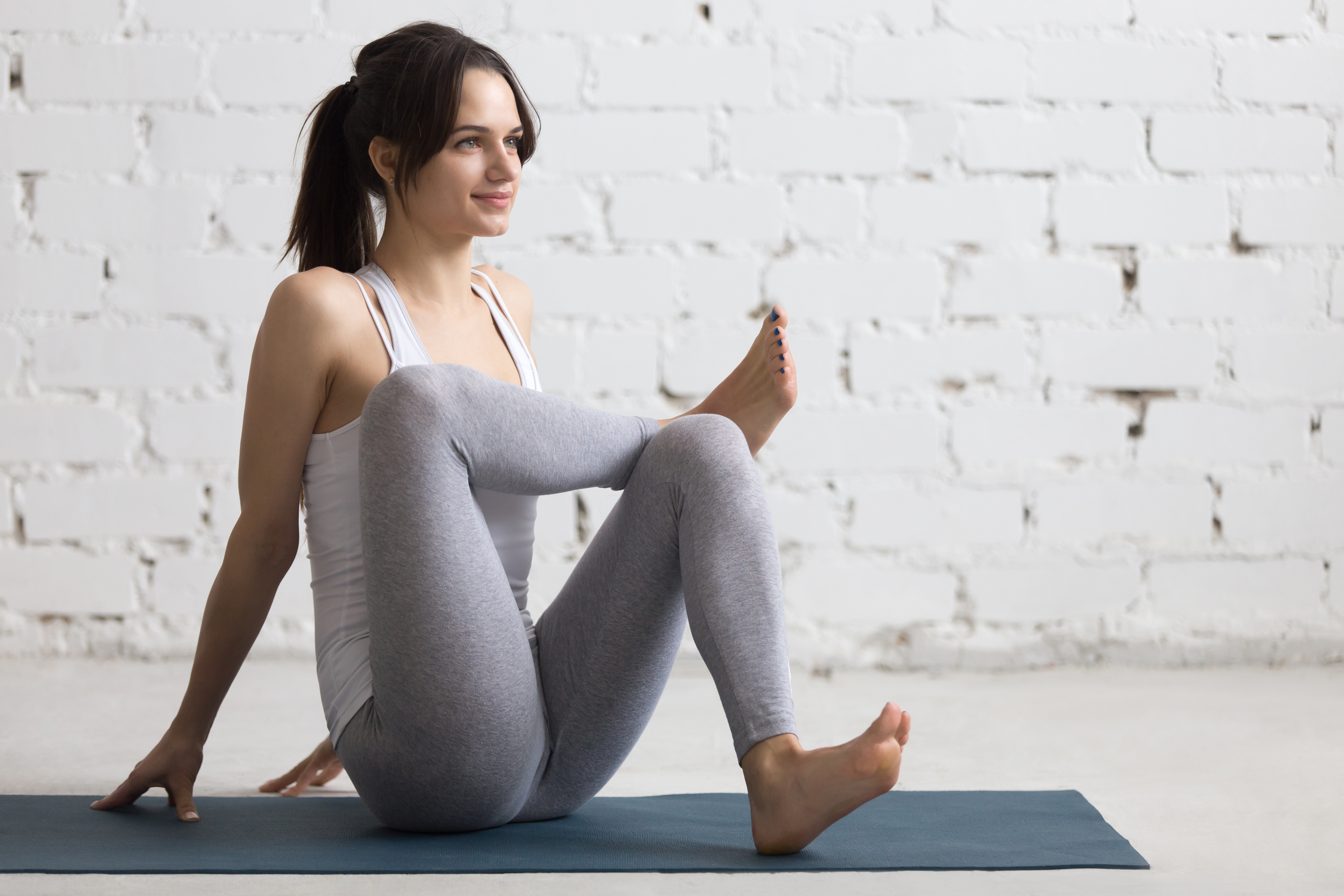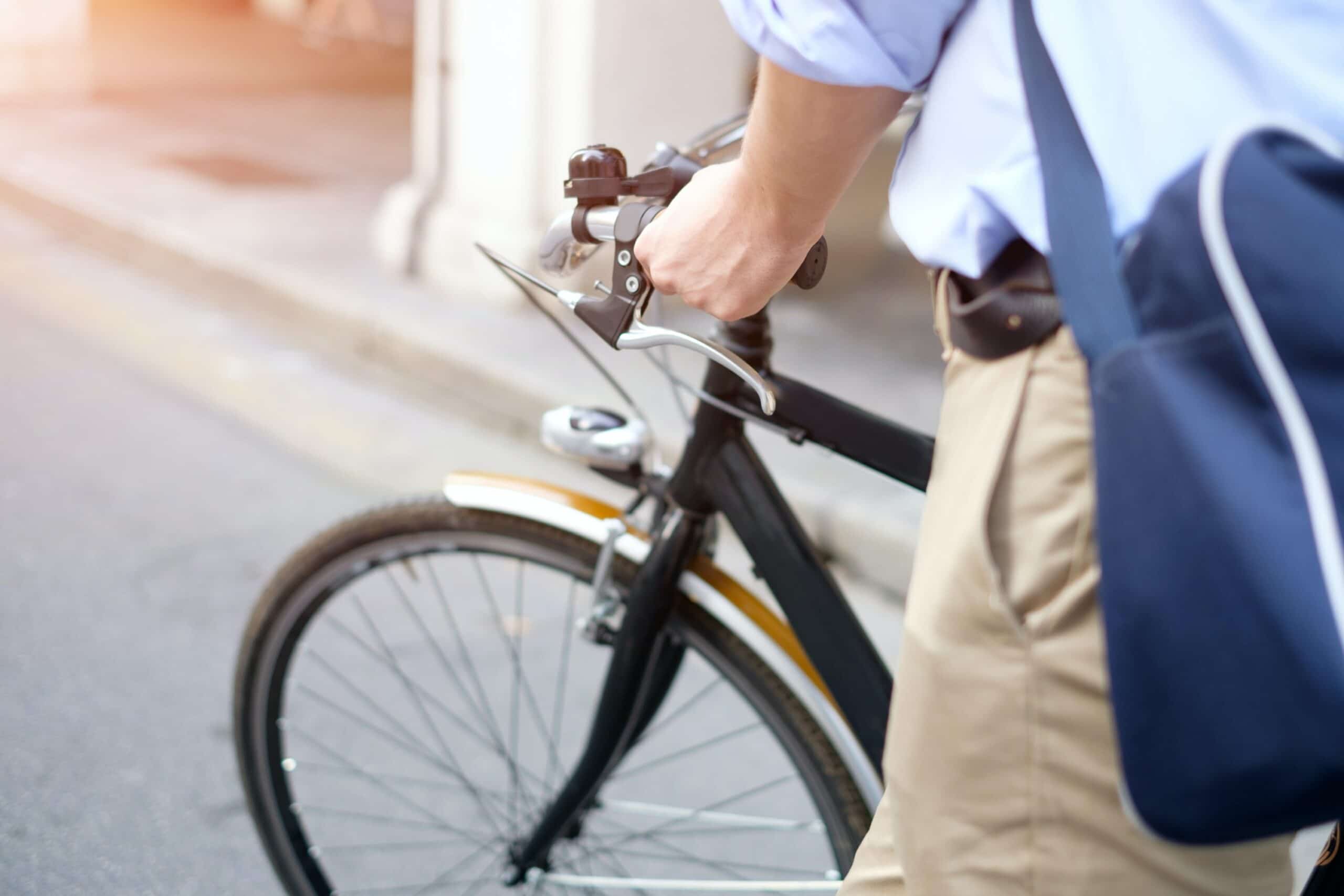Amid rising unemployment levels, disruption to our routines and fears about the health of loved ones, there has been one small silver lining to the coronavirus pandemic: more of us are cycling than ever before.
With many governments now advising people look for alternative ways to commute – ones that avoid cramming onto public transport – cycling to work will be a new normal for many of us. And when better to start than Cycle to Work Day?
Cycling may not feel too intense at the time, but repetitive pedalling can lead to tightness, aches and pain if you’re not careful. It can also cause limited range of motion in the joints too, which can affect your performance in other sports and activities.
To stay adventure-ready for whatever hills, roads or trails may come your way, it’s important to maintain a consistent stretching routine that focuses on the muscles most affected by cycling.
Here are four to start practicing after your next ride…
1. Calf stretches against a wall
The calf muscles run from the back of the knee to about halfway down the lower leg, and can become tight if they’re not stretched after you hop off your bike.
When we pedal, our calves work together with the hamstrings and quadriceps to power the leg forward. If your seat isn’t high enough – a common mistake with new cyclists – calf tightness can become even more pronounced.
Osteopath Anisha Joshi (osteoanisha.com) says: “When you cycle, you use your ankle more than you realise in order to push the pedals. Mobility within the ankle joint is paramount to help with stability whilst cycling, but also to help power up a hill climb.
“The calf is made up of three muscles that then go in to form the Achilles tendon in your heel. By stretching this muscle, it improves the mobility in the ankle and prevents other conditions from developing in the area. Commonly, Achilles tendonitis or plantar fasciitis can result from tight calves and poor stretching habits in cyclists.”
How to do it: Lift your left foot and flex at the ankle to point your toes up toward the ceiling. Position the sole of your left foot against the wall and your heel on the floor. Gently lean your weight towards the wall to deepen the stretch and increase the intensity in the calf. Hold for 30 seconds before switching to the other foot.
2. Downward dog
Otherwise known as Adho Mukha Svanasana, downward dog is one of the most practiced yoga poses. Cycling brings tension to the back of the legs, and this posture is great for relaxing overly tight hamstrings and calf muscles.
Joshi says: “This is a brilliant stretch to target the hamstrings and lower back. When cycling, you use your pelvis to really drive the bike forward to gain speed and to maintain precision. Improving the range of movement in your hamstrings and lower back can not only prevent injury, but also improve performance.”
How to do it: Kneel on the floor and plant your hands shoulder-width apart on the mat, spreading your fingers out wide. As you press your hands down into the mat, gently tuck your toes under and lift your knees off the floor, reaching your pelvis up towards the ceiling.
Draw your sit bones toward the wall behind you and gently begin to straighten your legs. Pedal out the legs, one by one, to gently deepen the stretch.
3. Quad stretch

The great thing about this stretch is that it can be done anywhere; practicing a few of them before you jump on your bike while out and about can really help reduce stiffness the next day.
Joshi says: “Like your hamstrings, your quads are vital for providing power, balance and support when cycling. They attach to the anterior part of your pelvis and then insert just below your knee cap. By stretching your quads, you are increasing the mobility throughout your anterior chain and helping to promote range of motion in your hips and knees.
“When cycling, it’s very common to see tight hip flexors and groins due to the repetitive compression through this area – by stretching your quads you are also relieving these areas to prevent injury. ”
How to do it: Standing on both feet, gently grab your right foot with your right hand and pull it towards your glutes behind you. You should now be balancing on your left foot; you can hold a chair or the wall to keep you stabilised. Hold the position for 30 seconds before switching to the other leg.
4. Seated glute stretch

When you’re first getting into cycling, it’s a good idea to work on opening the hips and to stretch the muscles of the hips, groin, and glutes. This can help reduce discomfort on long rides.
Joshi says: “By sitting down you are targeting the glutes in a different way – you’re essentially taking out the use of the hamstrings. Your glutes are very important when cycling to keep your legs pedalling and maintain endurance – the sciatic nerve also runs through this area, so keeping it mobile is key to avoiding injuries like sciatica.”
How to do it: Sit on the floor and sit with your legs bent in front, feet on the floor. With your back upright, lift your left leg and place your left ankle on your right knee. Leaning slightly forward will deepen the stretch in your glutes and hips. Hold the position for 30 seconds before switching to the opposite leg.
